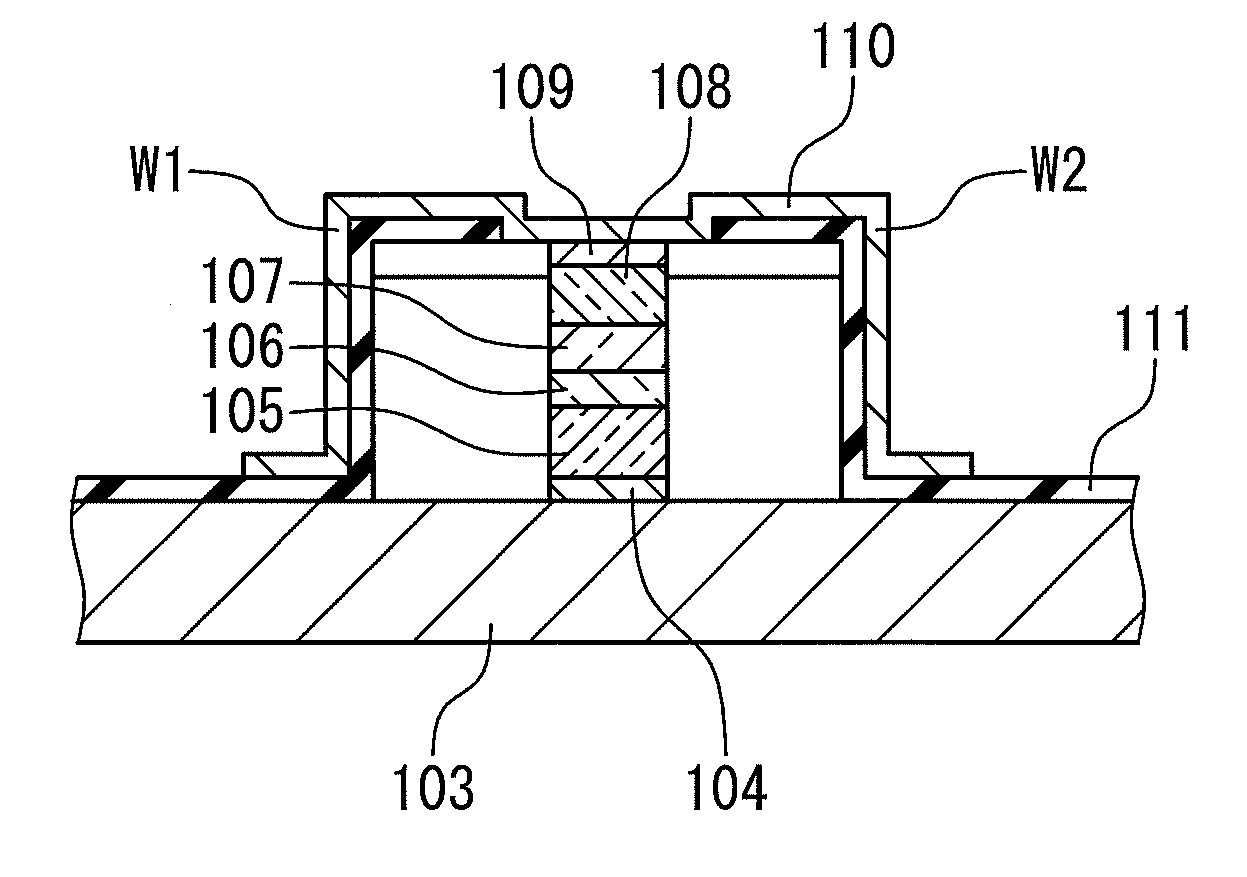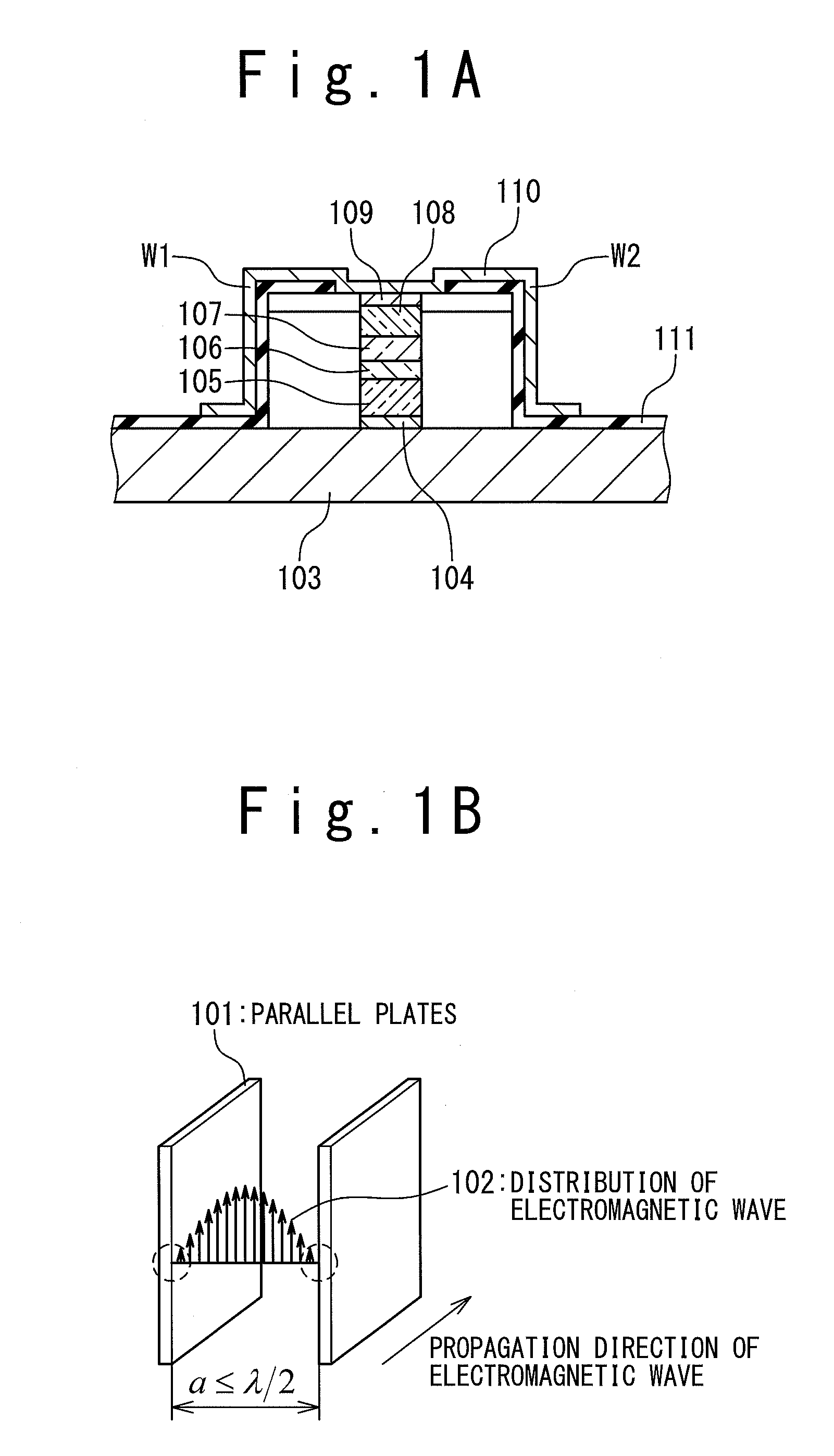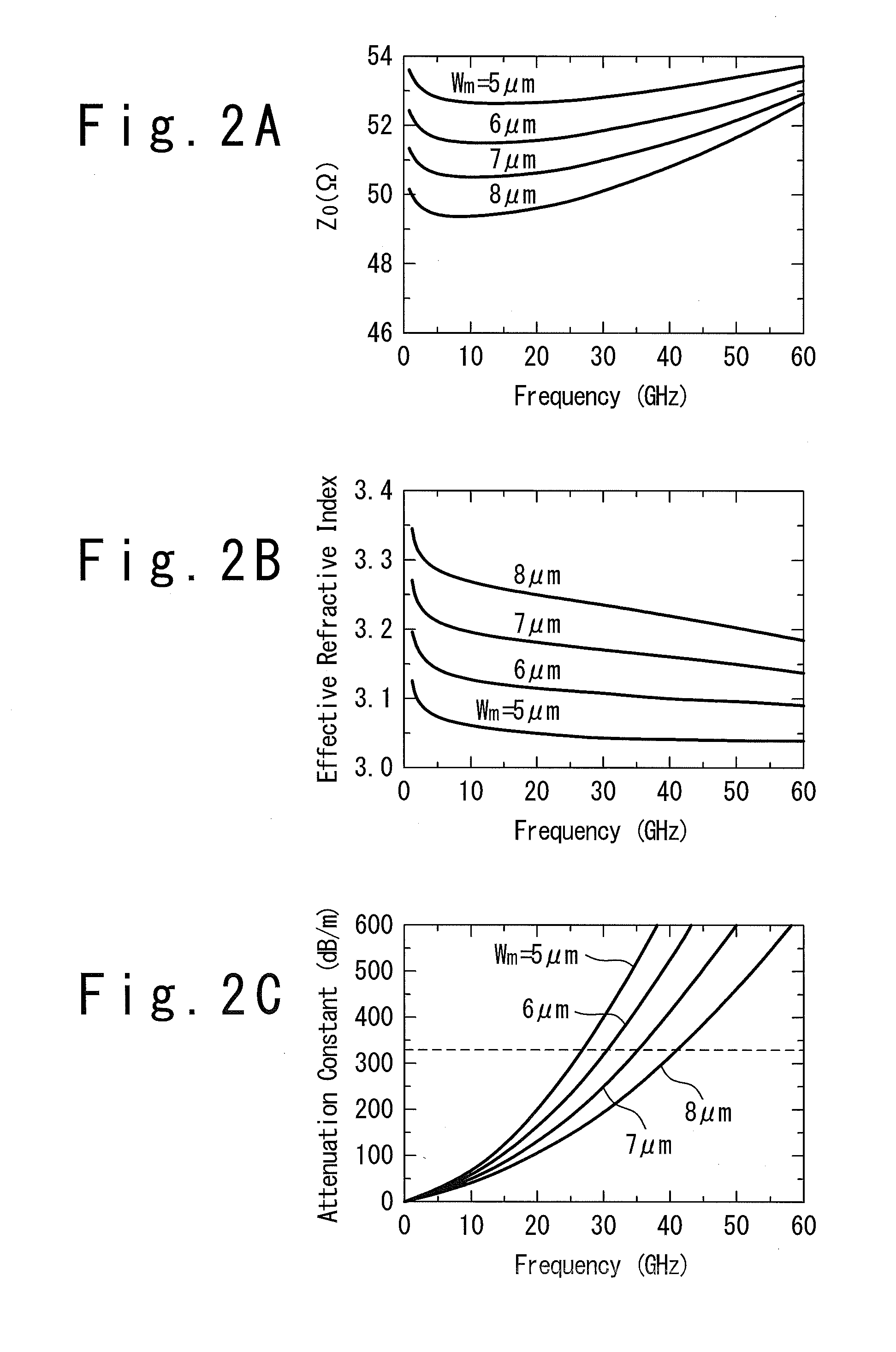Semiconductor optical modulator
a semiconductor and optical modulator technology, applied in the direction of optics, optical waveguide light guides, instruments, etc., can solve the problems of degrading optical modulation characteristics and increasing insertion loss, and achieve the effects of reducing drive voltage, electric field strength, and lengthening interaction length
- Summary
- Abstract
- Description
- Claims
- Application Information
AI Technical Summary
Benefits of technology
Problems solved by technology
Method used
Image
Examples
first embodiment
[0071]Hereafter, best mode embodiments for carrying out the present invention will be described in detail referring to drawings. In the present embodiment, a pair of conductor walls almost parallel to the electric field applied to an undoped core layer is provided on both sides of this undoped core layer, and this will functions as below cut-off parallel plates to a modulation RF signal.
[0072]FIG. 1A is a sectional view showing a concrete configuration thereof. The optical modulator in the present embodiment includes a buffer layer 104 formed on a semi-insulating semiconductor substrate 103, a lower clad layer 105 formed on the buffer layer 104, an undoped core layer 106 formed on the lower clad layer 105, an electron injection stop layer 107 formed on the undoped core layer 106, an upper clad layer 108 formed on the electron injection stop layer 107, the upper clad layer 108, and a contact layer 109 formed on the upper clad layer 108. This layered structure forms a stripe shape in ...
second embodiment
[0080]FIG. 4A is a plan view showing a configuration of a semiconductor optical modulator in a second embodiment of the present invention. FIGS. 4B to 4G are sectional views showing a manufacturing process of the semiconductor optical modulator. FIG. 4B shows a cross-sectional structure at the time when the first crystal growth has been completed. FIG. 4C shows a cross-sectional structure at the time when a stripe processing by etching is done. FIG. 4D shows a cross-sectional structure at the time when a process up to buried growth has been completed. FIG. 4E shows a cross-sectional structure at the time when grooves are formed on both sides of an optical waveguide stripe. FIGS. 4F and 4G are diagrams showing cross-sectional structures taken along a line A-A′ and a line B-B′ after electrode formation, respectively. An upper electrode 214 and a lower electrode 215 provide independent electric potentials to the lower clad layer and the upper clad layer, respectively, and constitute a ...
third embodiment
[0090]FIG. 6A is a plan view showing a configuration of a semiconductor Mach Zehnder (MZ) light intensity modulator to which a semiconductor optical modulator in a third embodiment of the present invention is applied. FIGS. 6B to 6G are sectional views showing a manufacturing process of an MZ light intensity modulator. FIG. 6B shows a cross-sectional structure at the time when the process up to the first crystal growth has been completed. FIG. 6C shows a cross-sectional structure at the time when the stripe processing by etching is done. FIG. 6D shows a cross-sectional structure at the time when the process up to a buried growth has been completed. FIG. 6E shows a cross-sectional structure at the time when grooves are formed on both sides of the optical waveguide stripe. FIGS. 6F and 6G show cross-sectional structures taken along a line A-A′ and a line B-B′, respectively, after the electrode formation.
[0091]This element is formed as follows. A buffer layer 402, a lower clad layer 40...
PUM
 Login to View More
Login to View More Abstract
Description
Claims
Application Information
 Login to View More
Login to View More - R&D
- Intellectual Property
- Life Sciences
- Materials
- Tech Scout
- Unparalleled Data Quality
- Higher Quality Content
- 60% Fewer Hallucinations
Browse by: Latest US Patents, China's latest patents, Technical Efficacy Thesaurus, Application Domain, Technology Topic, Popular Technical Reports.
© 2025 PatSnap. All rights reserved.Legal|Privacy policy|Modern Slavery Act Transparency Statement|Sitemap|About US| Contact US: help@patsnap.com



